
by Chris Limantour | May 26, 2024 | Audi Repair
Driving an Audi can be a delightful experience, however, this fun can turn into fright in a split second. One of the most alarming sights for any driver is the check engine light flashing on the dashboard. It is your car’s way of telling you that something has gone wrong within the vehicle. Before we look at ways you can diagnose a check engine light and some simple fixes you can use to clear its illumination, let’s quickly find out what the check engine light is.
The check engine light (CEL) is a part of your car’s onboard diagnostics system (OBD). When it lights up, it means the car’s computer has detected a problem with the engine or in the emissions system. A check engine light may not point to a specific problem when it comes on, therefore, it is important that you figure out what is going on yourself, with the help of a mechanic.
Common Reasons for Check Engine Light Illumination
The check engine light in your Audi can be turned on for many reasons and it all usually points to a problem that needs to be dealt with. Some of the reasons are the malfunctioning oxygen sensor that is very important for regulating the fuel mixture, the problems with the catalytic converter that reduces the harmful emissions, the faulty spark plugs or wires that cause misfires and poor performance, and the issues with the mass airflow sensor that affects the delivery of fuel. These problems that you may be facing can be solved immediately with effective diagnosis and repair to prevent the occurrence of more serious damage to your Audi.
Steps to Diagnose the Problem
- Check the Gas Cap: The first thing you should do is check the gas cap. Most times, a loose or damaged gas cap can be the cause of the check engine light. Check that it is tight and in good condition. If it is loose, tighten it and check if the light goes off after a few drives. If the cap is broken, change it to a new one. A broken gas cap can lead to the fuel vapors leaking out, which in turn can affect the car’s emissions system.
- Use an OBD-II Scanner: An OBD-II scanner can retrieve the diagnostic trouble codes (DTCs) that are stored on your car’s computer. These codes can assist in the detection of the issue. You can buy a scanner or go to a mechanic who can do the scan for you. The scanner connects to a port under the dashboard and gets the codes that identify the problem. This is a very important step since it provides you with the particular details of what might be the problem with your car.
- Perform a Visual Inspection: Open the hood and look at the engine parts. Look for any obvious signs of damage, such as broken or corroded parts, loose wires, or leaks. The oxygen sensor, spark plugs, and wiring should not be forgotten. These are the common causes of the check engine light being on. Be on the lookout for anything that seems or feels odd or broken.
- Consult a Professional: If you are not able to figure out or solve the problem by yourself, then it is time to ask a professional. A skilled technician will have the tools and knowledge to find and fix the problem in a precise way. They can analyze the DTCs and do more tests if required. They will also be able to use the detailed repair manuals and technical service bulletins which can give them the necessary information about the problems of your car model.

Contact The Professional Audi Repair Shop In Hellertown
At JCL Automotive, our technicians are known as the most dependable experts in the Hellertown area when it comes to serving the most popular European cars and we offer 100% quality maintenance that makes sure you are always on the road with an Audi that you can trust. We have been doing a good job for Audi drivers in the area since 2005 and our service quality has not gone down till now.
If you have seen the annoying CEL on your Audi dashboard and you want to know why it has come on, you are in the right place. Our authorized mechanics will make sure that the problem is not only found but also repaired correctly. If you stay in Hellertown, PA, or the nearby cities, just call us on 484-851-3390 to reserve an appointment with our Audi experts.
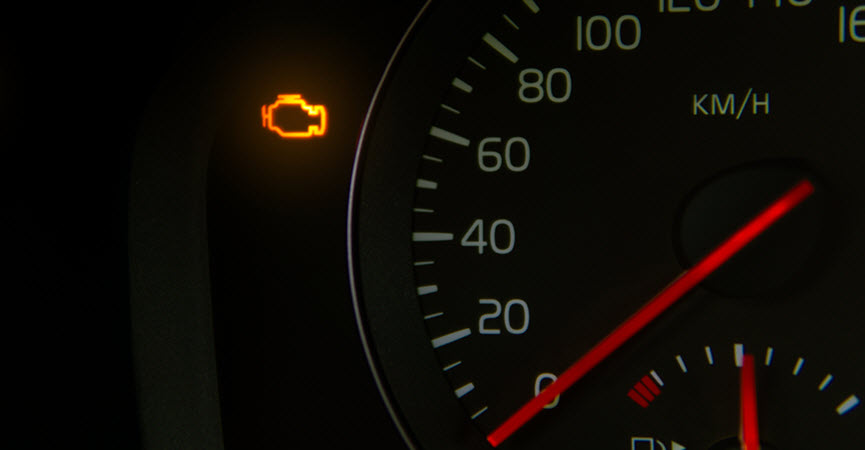
by Chris Limantour | Mar 19, 2024 | Audi Repair
The best part of owning a high-end luxury vehicle like an Audi is that you’ll get noticed. Your status in society will be elevated to such a point that people in your neighborhood will respect and admire you. But, there is a catch… as with any other vehicle, your Audi is susceptible to different problems- the most notable being the flashing of the check engine light.
So, what can prompt your Audi’s check engine light to start flashing and what could you do to diagnose the issue before it turns into an expensive repair??? Let’s discuss…
Common Reasons Your Check Engine Light May Be On
Being a part of your Audi’s onboard diagnostic system, the check engine light essentially comes on when a glitch is detected by the onboard computer in one of the crucial parts of the powertrain system or in the emissions control system. What kind of glitch, you asked? Well, let’s find out…
#1- Oxygen sensor failure
Mounted on the exhaust pipe, the oxygen sensor measures the concentration of oxygen gas in the exhaust emission. This real-time measurement of oxygen concentration, in turn, helps the engine control unit or ECU in keeping the air-to-fuel ratio inside the cylinder balanced. Should a sensor of such significance fail, the engine will perform poorly. This can lead to the illumination of check engine light.
#2- Catalytic converter issue
The catalytic converter is entrusted with a very simple task- which is to treat the exhaust emission before releasing it to the environment. This after-treatment device is the reason why your Audi meet emission regulations. If it fails, you will have to deal with all sorts of drivability issues. And, yes… you may even end up with a flashing check engine light.
#3- Defective MAF sensor
Just like there are sensors in place to monitor exhaust emissions, there is a set up to track and regulate air flow into the engine. Placed between the throttle body and air filter, the Mass Air Flow sensor is an important part of that arrangement. The data provided by this sensor helps the ECU in keeping the air-to-fuel proportion inside the combustion chamber close to ideal. A glitch in a sensor of such significance may set off your Audi’s check engine light.
#4- Loose gas cap
Another notable explanation as to why your Audi’s check engine light may start flashing is a loose gas cap. For those who don’t know, the gas cap is an important part of a vehicle’s evaporative emissions control system. And, the onboard diagnostic system of your Audi is programmed to warn you by setting off the check engine light- should something unusual happen to the gas cap.
Illuminated Check Engine Light: Resetting Tips
You may end up with expensive repairs if you decide to ignore such a warning indicator. So, you better try to figure out what went wrong with your Audi that set off the check engine light and have it fixed ASAP. Listed below are a few steps that you can follow to reset your Audi’s check engine light.
#1- Retrieve trouble codes
Use an OBD-II scanner to retrieve the trouble code stored in the fault memory of your Audi. The code will reveal a lot about the nature of the issue you are dealing with and may even help you reset the light. In addition to the use of OBD-II scanner, there are many different methods that you can make use of to reset the light.
#2- Contact a professional
If you are not handy with tools, you should take your Audi to a reliable service center in your locality to get the issue diagnosed. Professionals working in the service center are well equipped to deal with such issues. After thorough inspection, they will able to tell you the exact reason that prompted the onboard diagnostic system to activate the check engine light.
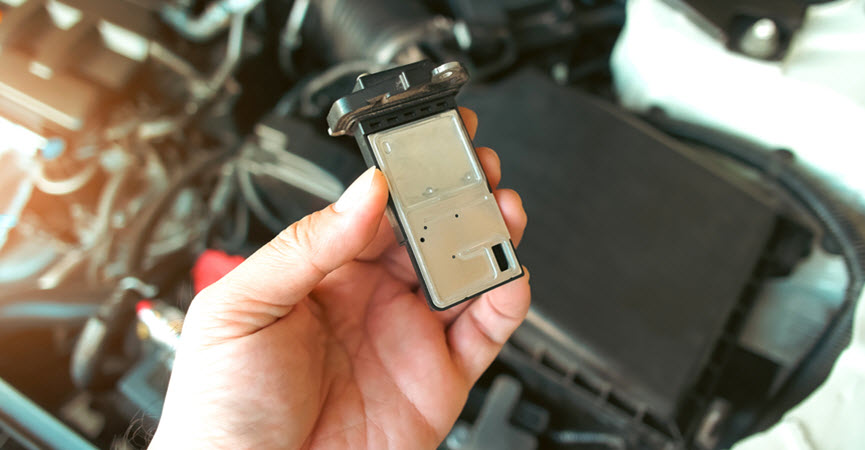
Our Audi Mechanics At JCL Automotive Can Help
More often than not, a blinking check engine light suggests a minor glitch such as a loose gas cap, a bad oxygen sensor, etc… But on occasion, the appearance of such a light signifies a serious engine issue that requires the attention of a professional.
JCL Automotive is your go to service center in Hellertown, PA– when it comes to addressing Audi check engine light issues. Professionals working in our facility have years of experience in automotive sector and specialized in dealing with complex issues in European cars especially Audi, BMW, and Mercedes. Feel free to contact us and let us reset your Audi’s check engine light.

by Chris Limantour | Dec 25, 2023 | Audi Repair
Have you ever noticed damp odors or unanticipated leaks inside your Audi, especially during rainy days? If so, the culprit might be hiding above – in the sunroof drains. While sunroofs are a cherished feature among Audi enthusiasts, they demand attentive care, particularly when it comes to their drainage system. Issues with sunroof drains can manifest as unexpected leaks or peculiar smells, requiring a closer look and proactive maintenance to ensure your driving experience remains enjoyable and hassle-free.
Common Causes of Clogged Sunroof Drains in Audis
- Debris Accumulation: Over time, dust, dirt, and other residues can accumulate within the sunroof’s drainage system. These sediments, combined with moisture, can form a sludgy buildup. This buildup gradually impedes the smooth flow of water through the drainage system, obstructing the drainage channels.
- Harsh Weather Conditions: Environmental factors like heavy rainfall or snowfall can exacerbate the blockages in the sunroof drainage. During severe weather, larger particles, such as debris carried by rainwater or snowmelt, can find their way into the drainage channels. These particles, coupled with existing debris, can contribute to blockages, further obstructing the free flow of water.
- Aging Components: With prolonged use and exposure to various elements, the materials comprising the sunroof’s drainage system, such as rubber seals or tubing, can deteriorate over time. As these components age, they may lose their elasticity, become brittle, or develop cracks, which can lead to blockages or leakages within the drainage tubes, reducing their efficiency in expelling water.
- Improper Maintenance: Neglecting routine cleaning of the sunroof’s drainage system when washing your Audi can significantly contribute to blockages. When debris, dust, and other residues are not regularly cleared, they can accumulate and solidify, forming stubborn blockages within the drainage channels. Proper and periodic cleaning of these drainage channels is crucial to prevent blockages and ensure efficient water drainage.
3 Warning Signs of Clogged Sunroof Drains in Audis
Identifying these signs is pivotal to addressing clogged sunroof drains promptly:
- Water Inside the Vehicle: A prominent indication of clogged sunroof drains is the accumulation of water inside the vehicle. Particularly noticeable on the floor or around the interior sunroof area, this pooling is a direct consequence of impaired drainage.
- Damp or Musty Odors: A persistent musty or damp smell within the car signals moisture buildup due to inadequate drainage. This odor often accompanies the accumulation of water, indicating potential drainage issues.
- Visible Leakage: A visible leak through the sunroof during rainfall or after washing the vehicle suggests drainage problems. Water seeping into the interior indicates a compromised drainage system.
Resolving Clogged Sunroof Drain Issues
To effectively address clogged sunroof drains in your Audi, follow these steps:
- Clearing Debris: The first step involves clearing debris from the drain channels. This can be accomplished using various methods such as compressed air to blow out debris, specialized cleaning tools designed for this purpose, or carefully threading a flexible cleaning device through the drainage tubes to dislodge and remove obstructions.
- Flushing the System: After clearing visible debris, flushing the drainage system with water or a mild cleaning solution helps further dislodge any remaining particles and ensures a clean, unobstructed passage for water drainage.
Preventive Measures
To minimize the risk of clogged sunroof drains in your Audi:
- Regular Maintenance: Regularly inspecting and cleaning the sunroof’s drainage system during routine vehicle maintenance is essential for preventing future clogs. A proactive approach helps identify potential blockages early and prevents water accumulation and related damage.
- Avoid Parking Under Trees: When parking your Audi, avoid areas with overhanging trees or locations where debris accumulation is prevalent. Parking away from such areas reduces the risk of debris entering the drainage system.
Resolving Audi’s Sunroof Drain Issues with JCL Automotive
At JCL Automotive, we can help keep your Audi’s sunroof drainage system in the best shape to ensure an uninterrupted and enjoyable driving experience. With over 15 years dedicated to serving European car owners in Hellertown, PA, our technicians have the expertise needed to efficiently tackle any sunroof drain concerns. Whether you’re located in Hellertown or the neighboring areas, you can count on us to provide comprehensive solutions. Reach out to us via phone call or drop by our shop to schedule an appointment with our seasoned experts. Your Audi deserves top-notch care, and we’re here to deliver just that.
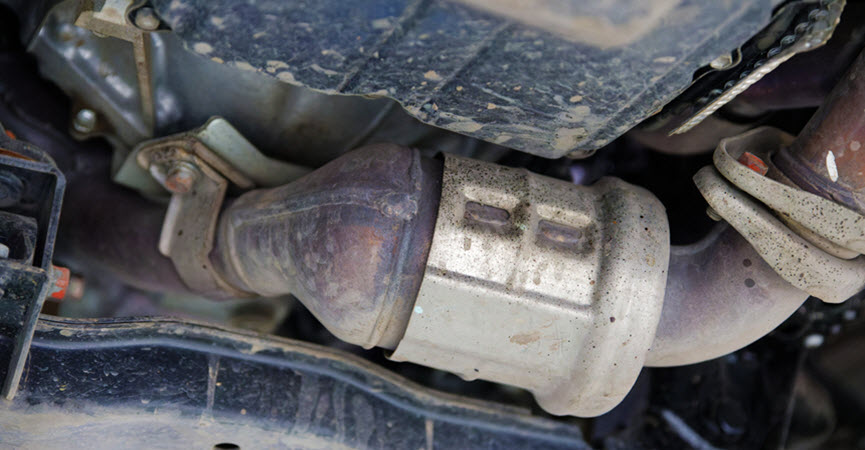
by Chris Limantour | Oct 18, 2023 | Audi Repair
At the heart of your Audi’s engine is a vital component known as the catalytic converter. The catalytic converter is an emissions control device, and it is located in your Audi’s exhaust system. It is primarily responsible for reducing harmful pollutants in the exhaust gases produced during the combustion process. Here’s how it works:
Conversion of Harmful Gases
As your Audi’s engine burns fuel, it generates exhaust gases that contain harmful pollutants, such as carbon monoxide (CO), nitrogen oxides (NOx), and unburned hydrocarbons (HC). The catalytic converter contains a honeycomb-like structure coated with precious metals, such as platinum, palladium, and rhodium. These metals act as catalysts to facilitate chemical reactions.
Oxidation and Reduction Reactions
In a typical three-way catalytic converter, there are two main reactions: oxidation and reduction. In the oxidation reaction, carbon monoxide and unburned hydrocarbons are oxidized into carbon dioxide (CO2) and water (H2O). In the reduction reaction, nitrogen oxides are reduced to nitrogen and oxygen gases.
Monitoring Sensors
Your Audi’s engine control unit (ECU) constantly monitors the performance of the catalytic converter using oxygen sensors. If the catalytic converter is not effectively reducing emissions, the ECU may trigger a warning light on your dashboard.
Emission Control
The catalytic converter ensures that the exhaust gases leaving your Audi are much cleaner and less harmful to the environment. It plays a critical role in helping your vehicle meet emission standards and regulations.
Signs of Catalytic Converter Failure
Catalytic converters are designed to be durable, but they can fail over time due to various factors. Here are some common signs of catalytic converter failure in your Audi:
- Illuminated Check Engine Light: A malfunctioning catalytic converter can trigger your Audi’s check engine light. The ECU may detect abnormal readings from the oxygen sensors, indicating that the catalytic converter is not working as intended.
- Reduced Performance: A clogged or failing catalytic converter can restrict exhaust flow, leading to a noticeable decrease in engine performance. Your Audi may feel sluggish and have reduced power.
- Unusual Odors: If the catalytic converter is overheating or failing, it can produce a distinctive sulfur-like odor. This smell can be quite unpleasant and is a clear indicator of a problem.
- Increased Fuel Consumption: A malfunctioning catalytic converter can also affect your Audi’s fuel efficiency. You may notice a significant drop in miles per gallon (MPG).
- Rattling Noise: Inside the catalytic converter’s honeycomb structure, the ceramic substrate can become damaged or break down. This can lead to a rattling noise when you tap the converter, which is a clear sign of internal damage.
Reasons for Catalytic Converter Failure
Understanding why catalytic converters fail is essential for preventing issues and addressing them promptly. Common reasons for catalytic converter failure include:
- Clogging: Over time, the catalytic converter can become clogged with carbon deposits and contaminants, reducing its efficiency. Clogging can result from engine misfires, excessive oil consumption, or using the wrong type of fuel.
- Physical Damage: The ceramic substrate inside the catalytic converter can be physically damaged by impacts, potholes, or other road hazards. This can lead to internal damage and poor performance.
- Excessive Heat: Running your Audi’s engine too hot, such as due to cooling system issues, can overheat the catalytic converter and cause it to break down.
- Oil or Coolant Contamination: If your Audi has a malfunctioning internal component, like a faulty valve stem seal or head gasket, it can allow oil or coolant to enter the exhaust system and contaminate the catalytic converter.
- Age along with Wear and Tear: Like any component, catalytic converters have a finite lifespan. Over time, the precious metal coatings may degrade, reducing the converter’s efficiency.
How Our Mechanic Will Fix It
We will start by performing diagnostic tests to determine if the catalytic converter is indeed the source of the problem. This may involve scanning the vehicle’s computer for error codes and using specialized equipment to monitor the converter’s performance. Our trained mechanic may inspect the catalytic converter and the surrounding exhaust components for physical damage, such as dents or leaks.
- Exhaust System Repairs: If the issue is related to exhaust system components like oxygen sensors or exhaust leaks, the mechanic will repair or replace these parts first, as these issues can often mimic catalytic converter problems.
- Catalytic Converter Replacement: If the catalytic converter is confirmed to be faulty, it will need to be replaced. Your mechanic will choose a compatible and quality replacement converter. Audi owners may opt for an OEM (Original Equipment Manufacturer) or aftermarket converter, depending on their preferences and budget.
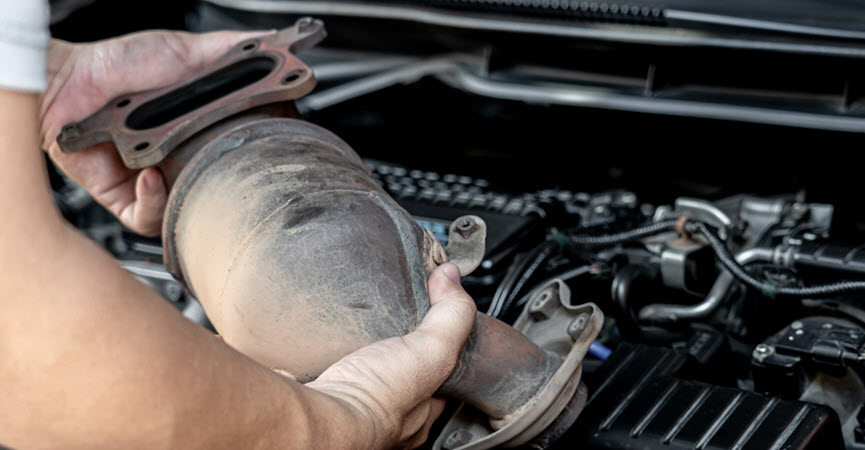
JCL Automotive: The Only Mechanic Your Audi Needs
Your Audi’s catalytic converter is an essential component that plays a pivotal role in reducing harmful emissions and ensuring your vehicle runs efficiently. When signs of catalytic converter failure appear, prompt action is essential to maintain the performance and compliance of your Audi. Visit us in Hellertown, PA, as we are conveniently located for our surrounding neighbors.
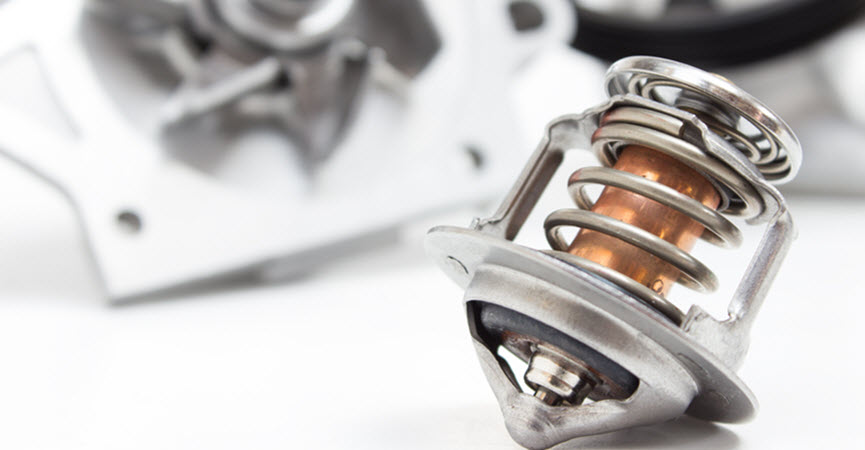
by Chris Limantour | Oct 1, 2023 | Audi Repair
Your Audi’s thermostat may seem like a small and inconspicuous component, but it plays a critical role in maintaining the operating temperature of your engine. As a gatekeeper for the coolant flow, the thermostat regulates the engine’s temperature, ensuring it stays within the designed range for efficient and reliable performance. However, if your Audi’s thermostat fails, it can have significant repercussions on the engine’s health and overall vehicle operation.
It is essential to understand why driving an Audi with a failed thermostat is not recommended and the potential risks it poses. Let’s take a closer look at some of the reasons for thermostat failure in Audi, discuss the implications of driving your Audi with a failed thermostat, and provide useful insights on what to do when you recognize this issue.
There can be several reasons why an Audi thermostat may fail. Here are some of them:
Stuck In One Position: Open or Closed
The thermostat can get stuck in either the open or closed position. If it remains open, coolant continuously flows through the engine, preventing it from reaching the optimal operating temperature. On the other hand, if it remains closed, coolant circulation is restricted, resulting in overheating.
Electrical or Sensor Issues
Some modern Audi models feature electronically controlled thermostats that rely on sensors and actuators. If there is a malfunction in the electrical components or sensor readings, it can lead to thermostat failure.
Coolant System Problems
Issues within the Audi’s coolant system, such as low coolant levels, air pockets, or a malfunctioning water pump, can also contribute to thermostat failure. These problems can disrupt the proper flow and circulation of coolant, leading to the thermostat not functioning as intended.
Wear and Tear
Over time, the internal components of the thermostat, such as the spring or valve, can wear out or become damaged. This wear can be a result of continuous exposure to high temperatures.
Road Debris and Dirt
The cooling system of an Audi can accumulate contaminants over time. These contaminants can affect the thermostat’s functionality, causing it to get stuck or operate improperly.
Implications of Thermostat Failure
Engine Overheating
One of the risks of driving an Audi with a failed thermostat is the potential for engine overheating. When the thermostat fails, it can get stuck in either the closed or open position, disrupting the coolant flow. This can result in excessive heat buildup and cause severe engine damage.
Reduced Fuel Efficiency
A malfunctioning thermostat can negatively impact your Audi’s fuel efficiency. When the thermostat fails to regulate the engine temperature properly, the engine may run colder than optimal. This can cause the engine to run rich, leading to increased fuel consumption. Driving with a failed thermostat can result in decreased mileage, requiring more frequent trips to the gas station.
Poor Performance
A failed thermostat can also affect the overall performance of your Audi. When the engine runs too hot or too cold, it can lead to sluggish acceleration, reduced power, and overall poor performance. Additionally, the engine’s electronic control unit (ECU) relies on accurate temperature readings to adjust the fuel and air mixture for optimal combustion. A malfunctioning thermostat can disrupt these readings, negatively impacting engine performance and responsiveness.
Don’t Risk It
If you do not want your Audi’s engine to overheat, have poor fuel efficiency, or reduced performance, then you should not drive it when there is a suspected thermostat failure. It is advisable to have your Audi model inspected by our qualified Audi technician. We will diagnose the problem accurately and recommend the necessary repairs or replacement of the thermostat to restore the proper functioning of your Audi’s cooling system. Remember that driving your cherished Audi with a failed thermostat is not a risk worth taking. The consequences can be detrimental to your engine’s health and overall performance.
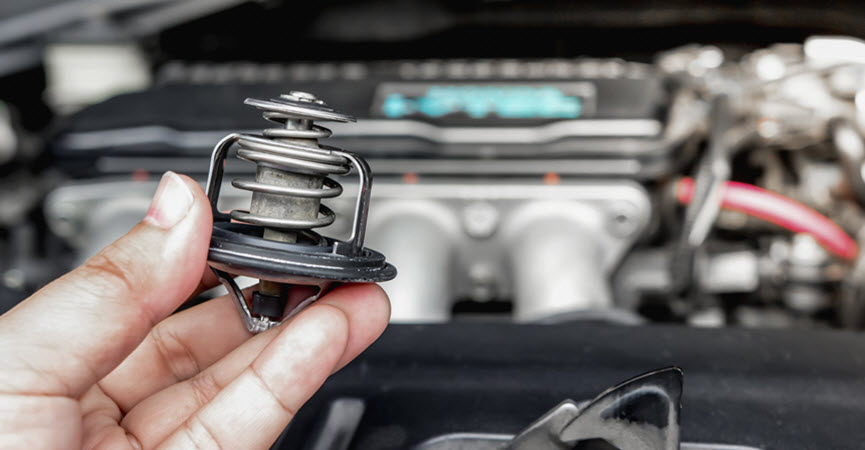
Visit Our Professional Audi Mechanics at JCL Automotive
At JCL Automotive, our team of skilled technicians is ready to take care of your thermostat needs. Located in Hellertown, PA, our automotive service and repair center is dedicated to providing top-notch care for your Audi. So, don’t hesitate to visit us and let us ensure that your Audi’s thermostat is in optimal condition. Book an appointment now.

by Chris Limantour | Sep 14, 2023 | Audi Repair
The catalytic converter is an essential component of your Audi’s exhaust system. Designed to reduce harmful emissions, this device converts toxic pollutants into less harmful byproducts before they exit the tailpipe. However, like other parts of your vehicle, the catalytic converter can become clogged over time, affecting performance, fuel efficiency, and emission levels. Let’s delve into the factors that cause a clogged catalytic converter in an Audi.
Causes of Catalytic Converter Clogs
- Engine Misfires: One of the primary causes for a clogged catalytic converter is engine misfire. When the engine misfires, unburned fuel can enter the catalytic converter, causing it to overheat and melt the internal honeycomb structure, leading to blockages.
- Poor Quality Fuel: Inferior or contaminated fuel can leave residues that the converter cannot efficiently process. Over time, this can lead to deposits building up inside the converter, impeding the flow of exhaust gasses.
- Engine Oil or Antifreeze Leaks: If engine oil or coolant enters the combustion chamber, they can contaminate the catalytic converter. The burning of these fluids can leave deposits which eventually lead to clogging.
- Rich Air-Fuel Mixture: If your Audi runs a consistently rich air-fuel mixture (more fuel than air), this can result in an excessive amount of unburned fuel entering the converter. This can cause it to overheat, resulting in a meltdown of the internal components.
- Poor Maintenance: Regular servicing ensures that components like spark plugs and oxygen sensors function optimally. Failing components can lead to engine misfires or inefficient combustion, which, in turn, can contribute to a clogged converter.
- Failing Oxygen Sensors: The oxygen sensors in your Audi regulate the air-fuel mixture. If they fail or become less efficient, they can send incorrect readings to the engine management system. This might cause the engine to run a rich or lean mixture, which can harm the catalytic converter over time.
- Excessive Short Trips: Frequent short drives prevent the catalytic converter from reaching its optimal operating temperature. When the converter doesn’t get hot enough, it can’t burn off contaminants effectively, leading to buildup and clogging over time.
- Old Age: Like all automotive components, catalytic converters have a lifespan. With age, the internal materials can break down or become less efficient at converting pollutants. Older converters might be more susceptible to clogging due to natural wear and tear.
- External Damage: Physical damage, such as impact from road debris or accidents, can lead to a compromised converter structure. This can cause the internal honeycomb structure to break or collapse, resulting in blockages.
- Contaminants in Exhaust: Certain contaminants in the exhaust, such as lead or silicon-based substances, can coat the internal parts of the converter. Over time, these contaminants can accumulate and obstruct the flow of gasses.
The Implications of a Clogged Converter
A clogged catalytic converter can lead to various issues for your Audi, such as:
- Reduced Engine Performance: The blockage can increase exhaust back pressure, reducing engine efficiency and power.
- Poor Fuel Economy: Reduced engine efficiency translates to higher fuel consumption.
- Increased Emissions: A failing converter can’t efficiently treat exhaust gasses, leading to a spike in harmful emissions.
- Engine Overheating: The increased back pressure can lead to elevated engine temperatures.
- Illuminated Check Engine Light: Modern vehicles monitor the efficiency of the catalytic converter. A clog or failure can trigger the check engine light.
Maintain Your Audi’s Performance
Maintaining your Audi’s catalytic converter is crucial for optimal performance and to stay compliant with emission standards. Regularly inspecting and servicing your vehicle can preemptively identify and address issues that might lead to a clogged converter. If you suspect your converter might be failing, seek professional assistance to diagnose and address the problem promptly.
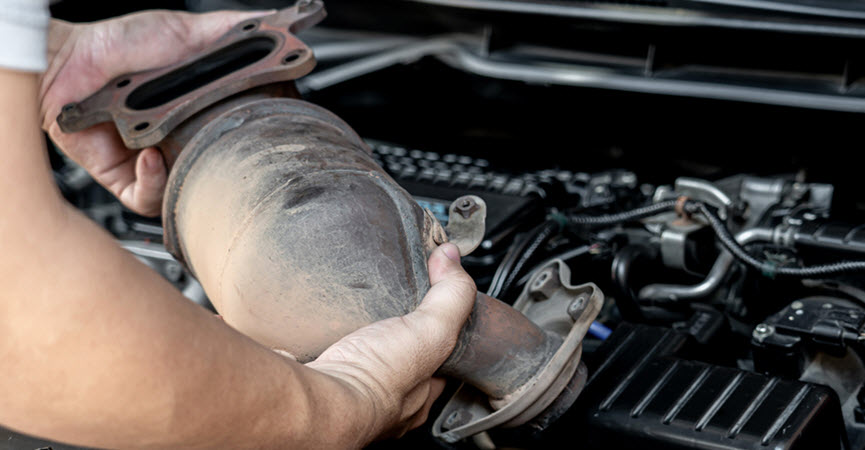
Book An Appointment With JCL Automotive Today
At JCL Automotive in Hellertown, PA, we understand the unique challenges associated with maintaining and repairing luxury vehicles like Audi. If you suspect that your Audi’s catalytic converter is clogged, it’s crucial to address the issue promptly to maintain optimal performance and prevent further complications.
Our team of seasoned technicians has vast experience in diagnosing and rectifying such problems. Don’t let a clogged catalytic converter affect your Audi’s performance or contribute to environmental pollution. Book an appointment with us today, and ensure your vehicle remains in top condition. Your Audi deserves the best, and at JCL Automotive, that’s exactly what we deliver.

by Chris Limantour | Jun 4, 2023 | Audi Repair
Tail lights are a fundamental component of Audi cars, as they ensure visibility and safety on the road. However, when these lights stop functioning properly, it can create danger for drivers, passengers, and others on the road. Every Audi owner will want to know the signs that indicate failed Audi tail lights and what can happen if you decide to do nothing about it.
What are the Signs of Failed Audi Tail Lights?
- Dim or Flickering Lights: Dimming or flickering tail lights in your Audi can be one of the first indicators that something is wrong, so if yours are becoming less bright or intermittently flickering, it’s a telltale sign of trouble. This issue could be caused by anything from faulty bulbs, wiring issues, or malfunctioning control modules, but this short list is not exhaustive.
- Warning Light on Dashboard: Most modern Audi vehicles feature an advanced onboard diagnostic system to identify faults in various components, including tail lights. When a warning light relating to these lights appears on your dashboard, this indicates an issue that must be dealt with quickly to prevent further damage or safety risks.
- Total Failure: If your Audi’s tail lights aren’t visible at all, you’ll know for sure there’s a problem. Without functioning tail lights, other drivers may find it difficult to notice your vehicle at night or under adverse weather conditions. A total light failure could result from a blown fuse, damaged wiring harness, or malfunctioning switch, among many other causes.
What to Do When You Notice Failed Audi Tail Lights
- Professional Inspection: Once you notice signs of failing tail lights in your Audi, the first step should be consulting a certified automotive technician specializing in Audi vehicles. They have access to specialist tools that will allow them to accurately pinpoint any underlying problems or repairs needed, saving time and avoiding additional damage caused by misdiagnosis or incorrect DIY repairs.
- Replace Faulty Components: Based on inspection results, a technician will identify which components contribute to tail light failure and replace or repair them accordingly. This could involve replacing bulbs, fixing wiring problems, or changing out control modules as necessary. Genuine Audi parts or high-quality aftermarket alternatives must always be used for performance and compatibility reasons.
- Testing and Verification: After replacing faulty components, your technician will conduct comprehensive tests to ensure your tail lights operate efficiently. This includes checking their brightness, response time, and synchronization with other lighting systems on your Audi. In addition, they’ll verify proper alignment and aim for maximum visibility.
What if I Don’t Fix My Audi’s Broken Tail Lights?
When your Audi’s tail lights fail, other drivers become less aware of its presence, especially under low light conditions. This drastically increases the risk of rear-end collisions since other drivers cannot anticipate your next moves. You may also face legal consequences if law enforcement sees that your tail lights are out. This is cause for a ticket, since it puts you and everyone else on the road in jeopardy of an accident.
- Potential Accidents and Legal Consequences: Failing tail lights can have dire repercussions for both drivers. Limited visibility can lead to collisions, property damage, injuries, or even fatalities on the roadways. Furthermore, driving with malfunctioning tail lights has legal ramifications, such as fines or penalties, which must also be paid.
- Compromised Safety Features: Modern Audis typically incorporate advanced safety features, such as adaptive cruise control and collision warning systems. These features rely heavily on accurate detection from tail lights to respond to their environment, which means ignoring failed tail lights could compromise these vital safety measures.
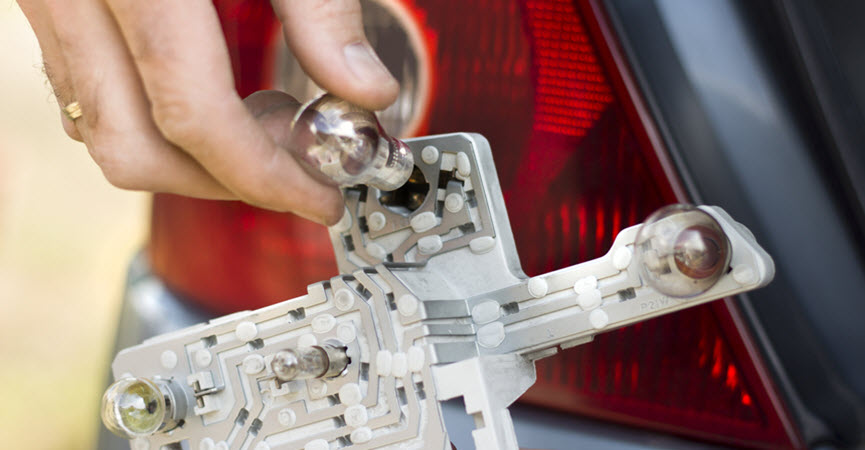
Visit the Best Repair Shop in Hellertown to Repair Failed Audi Tail Lights
Properly functioning tail lights are crucial to road safety, abiding by traffic regulations, and avoiding legal complications. If your Audi tail lights show any indications of malfunction, from dim or flickering lights to total failure, they must be repaired quickly.
Consult with the professionals at JCL Automotive in Hellertown, PA today for an efficient solution to your Audi’s tail light problems. We can help you get back on the road safely quickly and affordably. Allow us the opportunity to earn your repeat business! Call us today.
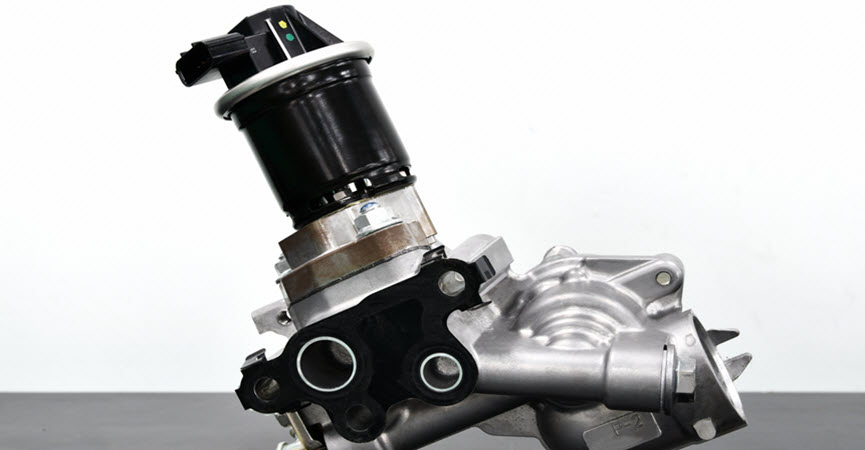
by Chris Limantour | Mar 28, 2023 | Audi Repair
Audi vehicles are known for their high-performance engines, and maintaining the EGR valve is crucial to ensuring the vehicle’s optimal performance and longevity. Regular maintenance and inspections can help prevent EGR valve failure and prolong the vehicle’s lifespan. However, when the valve fails, it’s essential to address the issue promptly to prevent further damage and ensure the vehicle meets emissions standards. Let us go into details on what the EGR valve does, signs of failure, how and where to replace it.
What Is EGR Valve?
The EGR (Exhaust Gas Recirculation) valve is integral to modern engines, including those used in Audi vehicles. The valve’s primary function is to reduce the amount of harmful emissions produced by the engine by recirculating some exhaust gases back to the combustion chamber. This process lowers the engine’s peak combustion temperature, reducing the amount of nitrogen oxides and other pollutants emitted into the atmosphere.
However, over time, the EGR valve can become clogged or damaged, leading to engine problems. When the valve malfunctions, it can disrupt the engine’s air/fuel mixture, reducing performance, increasing emissions, and causing a rough idle. If left unchecked, a faulty EGR valve can cause significant damage to the engine and other components, resulting in costly repairs.
Symptoms of a Faulty Audi EGR Valve
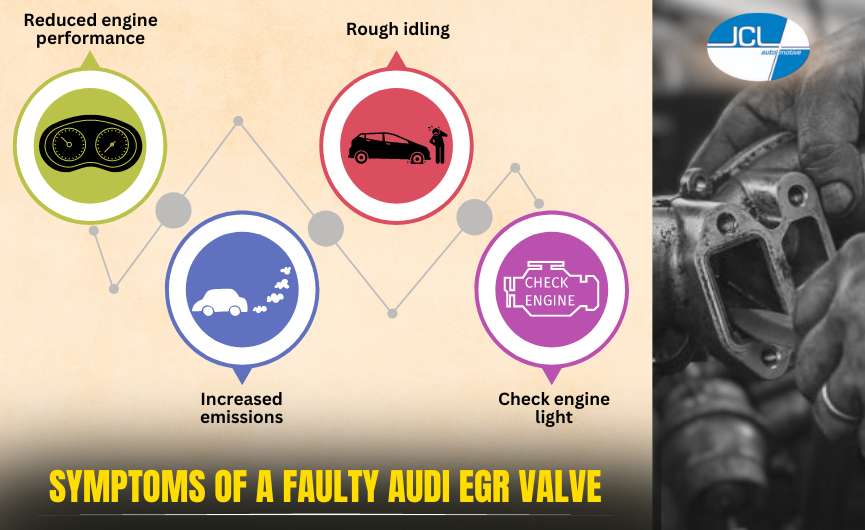
- Reduced engine performance: A faulty EGR valve can cause a reduction in engine performance, resulting in a decrease in power and acceleration. This is because the valve regulates the return of exhaust gases to the engine’s combustion chamber, which affects the engine’s power output. If the valve is clogged or not functioning correctly, it can reduce the amount of exhaust gas that is recirculated, leading to a decrease in engine performance.
- Increased emissions: The EGR valve plays a crucial role in reducing harmful emissions from the engine by recirculating exhaust gases back to the engine’s combustion chamber. If the valve is malfunctioning, it may not be able to regulate the flow of exhaust gases effectively, leading to an increase in emissions. This can cause the vehicle to fail emissions tests and contribute to air pollution.
- Rough idling: A faulty EGR valve can cause the engine to idle roughly or even stall. When the valve is clogged or not functioning correctly, it can disrupt the engine’s air/fuel mixture ratio, leading to uneven combustion and rough idling. In some cases, the engine may even stall when the vehicle is at a stop.
- Check engine light: If the EGR valve is malfunctioning, the Check Engine light may come on, indicating a problem with the engine’s emissions control system. The Check Engine light can be triggered by various issues, including a faulty EGR valve, and it’s essential to have the vehicle inspected by a qualified mechanic as soon as possible to diagnose the issue and prevent further damage to the engine.
Replacing an Audi EGR Valve
If the EGR valve is severely damaged or cannot be repaired, it may need to be replaced. Replacing an EGR valve in an Audi vehicle involves several steps, including:
- Removing the old valve: The old EGR valve is removed from the engine and inspected for any signs of damage or wear.
- Cleaning the valve ports: Before installing the new EGR valve, the valve ports and surrounding area are cleaned to remove any dirt or debris.
- Installing the new valve: The new EGR valve is installed and secured to the engine using the appropriate bolts and gaskets.
- Testing and recalibrating: Once the new valve is installed, it must be tested and recalibrated to ensure optimal engine performance.
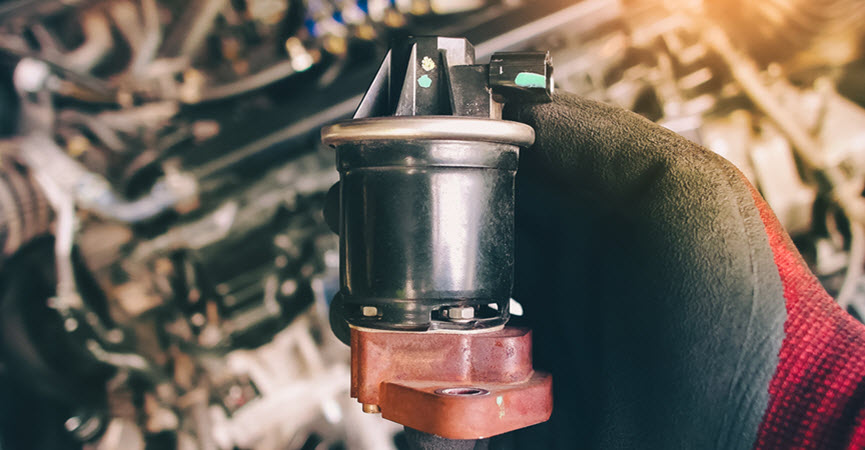
JCL Automotive has the Best Mechanics in Hellertown!
At JCL Automotive, we are known as the leading auto repair shop in Hellertown, PA, and we offer a range of services for different kinds of vehicles. We are staffed by certified mechanics trained to diagnose and repair various automotive issues.
If you need assistance with an Audi EGR valve repair or replacement, you may want to contact us to schedule an appointment. Our mechanics will provide you with a comprehensive inspection and diagnosis of your vehicle’s EGR valve to determine if repair or replacement is necessary. Additionally, we can offer you advice on how to maintain your EGR valve to prevent future issues. Visit our shop or call us now for your car repairs.

by Chris Limantour | Feb 23, 2023 | Audi Repair
One of the most important components in your Audi that needs attention is the valve seal. If this valve or its seal is cracked or damaged, it will leak oil and negatively affect the performance of your Audi. The seal is a synthetic material that locks the entrance to the valve, thereby allowing or stopping oil from passing through. An engine’s valves and gaskets play a crucial role in ensuring its smooth running, and their importance cannot be overemphasized.
What are the signs of a Valve Seal Oil Leak?
A valve or gasket that leaks oil may have some of the following signs:
- Smell of burning oil: When the valve or gasket of an engine leaks oil, the oil will usually drip down the vehicle engine or spread across other surfaces, and when it finds its way to one of the metal components that are hot such as the exhaust pipe, cylinder head, or other metallic materials that are usually hot, these metals burn the oil and cause it to produce the smell of a burned oil. If you perceive burning oil in your vehicle, do well to contact a professional to ascertain the cause of the oil leak.
- Dirt appearing on the valve cover or visible oil: The accumulation of oil in the valve gasket makes it very easy to detect a leak. When a technician pours oil into the car, some may collect at the cylinder head, which is usually cleaned. If after the car has worked for some time and you still observe this, it means oil still finds its way out from somewhere. Your technician will inspect the valve and detect the exact source of the leak. It’s most likely a result of a bad valve.
- Engine oil gets low: Another way to detect valve seal oil leaks is the dashboard oil light coming on. As oil leaks from the vehicle frequently, it causes the amount of oil to drop drastically, which will cause the oil light on the dashboard to come on. If you observe a continuous drop in the oil level, this is an indication that the valve seal is bad or that oil has found its way out of your engine through a leak. Alert our professionals to inspect your Audi so that the necessary steps can be taken to solve the problem.
- Misfire or irregular running of engine: When the engine of your Audi does fire smoothly in sync with all of its components, oil may have leaked into a part and is ruining the combustion process. Oil may have found its way into a spark plug tube, affecting the performance of the spark plug itself, for example. This can cause an engine misfire and all sorts of problems for your engine.
How Our Mechanics Will Resolve your Valve Seal Oil Leak
Repairing a valve seal oil leak in an Audi can be a complex process that requires specialized knowledge and tools. Here are the steps our mechanics might take to repair a valve seal oil leak in an Audi:
- Diagnosis: The first step is to identify the source of the oil leak. This might involve using a dye or other diagnostic tools to pinpoint the location of the leak.
- Disassembly: To access the valve seals, we will need to remove the valve cover and other components that are in the way. This might include removing the intake manifold or other parts.
- Valve seal replacement: Once the valve seals are accessible, we will remove the old seals and replace them with new ones. The new seals must be properly seated to prevent further leaks.
- Reassembly: After the new seals are installed, our mechanic will reassemble the engine components in the reverse order of disassembly.
- Testing: Once the repair is complete, we will test the engine to ensure that the valve seals are no longer leaking oil. This might involve running the engine and checking for leaks or using diagnostic tools to confirm that the issue has been resolved.
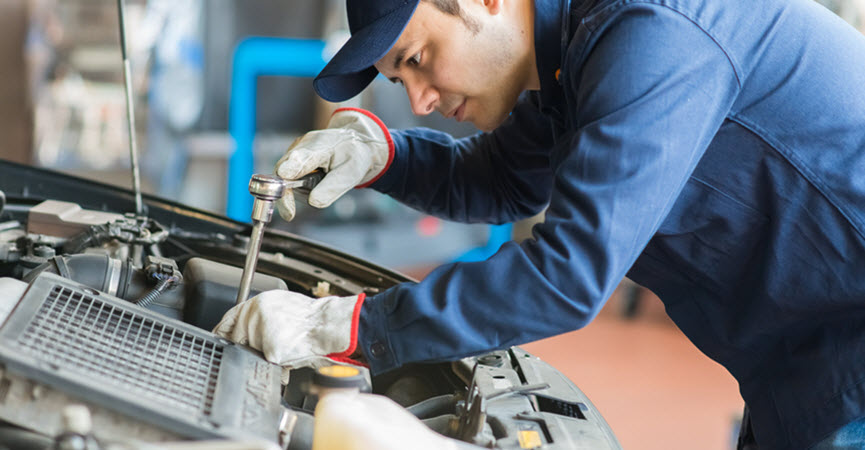
Schedule An Appointment With JCL Automotive Experts
Repairing a valve seal oil leak in an Audi can vary depending on the model and year of the vehicle, as well as other factors such as the severity of the leak and the condition of the engine. It’s always best to consult with a qualified mechanic or technician for guidance on the best course of action for your specific situation.
At JCL Automotive, we specialize in the maintenance and care of Audi and other vehicles. We are conveniently located in Hellertown, PA. Call us today for that unique car service that will give a long-lasting performance to your Audi car. We are always here to serve you!

by Chris Limantour | Dec 17, 2022 | Audi Repair
Audi is a renowned European car brand that produces one of the most durable cars in the industry. The carmaker continues to push the boundaries of innovation, and they have integrated new technologies into their new models. The introduction of a digital dashboard in some of the most recent car models is one example of such innovations. Digital dashboards, which replace the traditional analog dashboard displays, offer the standard speed, temperature, and fuel gauges, but they also allow driver customization. With a digital dashboard, you can add other displays like maps, phone calls, music, and a range of other features.
Although this dashboard display allows a driver to have more customization and control, it is also prone to malfunctions due to its digital nature, so it’s critical to understand the most prevalent problems and what you need to do if the digital dashboard in your Audi fails.
In this article, we will focus on a few of the difficulties that might occur and help you understand how to diagnose the problem as soon as possible so that your Audi dashboard can be fixed and return to the high performance it once delivered.
Blown Fuse
If your Audi has a digital dashboard and you have display problems or glitches on the dashboard, it is most likely due to a blown fuse. A single fuse can be replaced, but you should not do it yourself. Electrical components are very delicate, so they must be left to a professional. If you notice any of these signs, then it means your Audi may have a blown fuse, and you need to take it to a skilled Audi service technician.
- Dashboard display panels that are dimmer
- Displays that flash/glitch
- Display screens that are completely or partially inoperable.
Instrument Cluster
This is a more critical issue that requires prompt attention. The instrument cluster in your Audi controls the bulk of the icons that can be displayed by the dashboard.
If there’s a problem in the instrument cluster, then it must be replaced. As soon as you notice this, take your Audi to a certified Audi mechanic so you can get your digital dashboard back on track. Driving with a faulty digital dashboard might be dangerous for both you and other drivers.
Stay Updated
Unlike analog dashboards, digital dashboards need routine updates and upgrades to keep them functional. As previously stated, Audi and other car manufacturers release innovative upgrades to each Audi model; yours will also need regular updates, which will Include system inspections and software upgrades. This can be checked in your maintenance visits to ensure that your vehicle is in good working order. One of the easiest ways to detect an outdated digital dashboard version is when the dashboard performs slower than it used to.
What Should You Do When Your Digital Dashboard Malfunctions
If you notice a malfunction in the operation of your Audi’s digital dashboard as a result of a blown fuse or lack of upgrade, take your car to a reliable Audi repair shop immediately. A professional will be able to diagnose and fix the problem to prevent future issues in your vehicle.
We highly encourage you to not put off this visit when you first notice a problem with your digital dashboard, as it is very easy for a small problem to turn into a larger one. Unfortunately, a common cause of electrical issues is rodents, like mice or squirrels, chewing on wires under your car. This is something we can help prevent if caught early, but if the damage is too far gone, it can quickly become a more expensive fix.
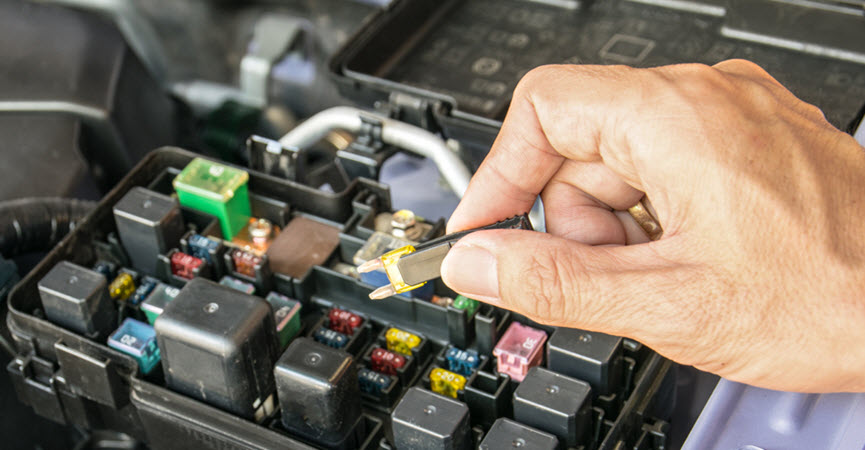
Bring Your Audi To The Experts At JCL Automotive
JCL Automotive is the go-to repair shop for Audi owners in Hellertown, PA, and its surrounding areas. We have been serving Audi owners in the area for years, and we can help you diagnose and fix any issue you have with your car. If you notice any malfunction in your vehicle’s digital dashboard, bring it to our certified Audi technicians. At JCL Automotive, our repairs and maintenance are fast and affordable. Book an appointment with one of our experts now to get the best service for your Audi.
* Audi Car image credit goes to: Evgenia Parajanian.
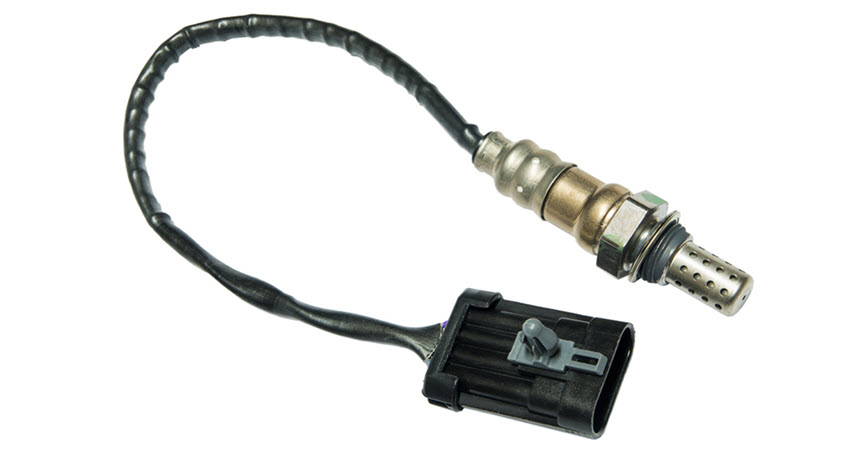
by Chris Limantour | Nov 13, 2022 | Audi Repair
In recent years, Audi has emerged as one of the most popular luxury car brands in the world. There are a number of reasons for Audi’s popularity, including its reputation for quality, its wide range of models, and its many innovative features. First and foremost, Audi is known for its attention to detail and high build quality. This is evident in everything from the fit and finish of the interior to the way the car drives. In addition, Audi offers a wide variety of models to suit every need and budget. From the compact A3 to the flagship A8, there is an Audi for everyone. Finally, Audi cars are packed with cutting-edge technology, from infotainment systems to driver assistance features. This makes them not only fun to drive but also safe and easy to live with. It’s no wonder that Audis have become such a popular choice for luxury car buyers around the globe.
Audi drivers are known for their attention to detail and their commitment to driving a high-quality vehicle. For these reasons, it is important to know the signs of a failing oxygen sensor. Not only will this help to keep your Audi running smoothly, but it will also help to protect the environment by preventing excess emissions from entering the atmosphere. With a little bit of knowledge and attention, you can keep your Audi running like new for years to come.
What is an oxygen sensor?
An oxygen sensor is a crucial component of a car’s emission control system. It monitors the level of oxygen in the exhaust gas and adjusts the air-fuel mixture accordingly. This helps to ensure that the engine is running as efficiently as possible and reduces emissions of harmful pollutants. Oxygen sensors are typically located in the exhaust pipe, downstream of the catalytic converter. They are made from durable materials that can withstand high temperatures, vibrations, and corrosive gasses. Over time, however, they can become coated with deposits or damaged, which can cause the engine to run less efficiently and produce more pollution. For this reason, it is important to have the oxygen sensor checked regularly and replaced as needed.
Signs of Oxygen Sensor Failure
One of the most common signs that your oxygen sensor may be failing is a decrease in fuel efficiency. If your vehicle seems to be using more gasoline than usual, it could be because the oxygen sensor is not accurately measuring the amount of oxygen in the exhaust, causing the engine to run less efficiently. Another telltale sign of a failing oxygen sensor is an illuminated check engine light. This typically indicates that there is a problem with the emission control system, and it should be diagnosed by a qualified technician as soon as possible. If you notice either of these symptoms, or any others that seem unusual, it’s important to have your vehicle checked out to ensure that the oxygen sensor is functioning properly.
Don’t Ignore the Signs of Oxygen Sensor Failure
Oxygen sensors are an important part of a car’s emission control system, and they play a key role in maintaining optimal engine performance. When they fail, it can have serious consequences for both the engine and the environment. One of the most immediate dangers of ignoring oxygen sensor failure is increased emissions. A faulty oxygen sensor can cause the engine to run too lean, leading to higher levels of dangerous pollutants like carbon monoxide. In addition, it can also lead to decreased fuel efficiency and increased wear on engine parts. Ignoring oxygen sensor failure can also eventually cause engine damage, as the lean air/fuel mixture can cause misfires and other problems. In extreme cases, it can even lead to engine failure. As you can see, it’s important to take care of oxygen sensor problems as soon as they arise. Neglecting them can have serious consequences for both your car and the environment.
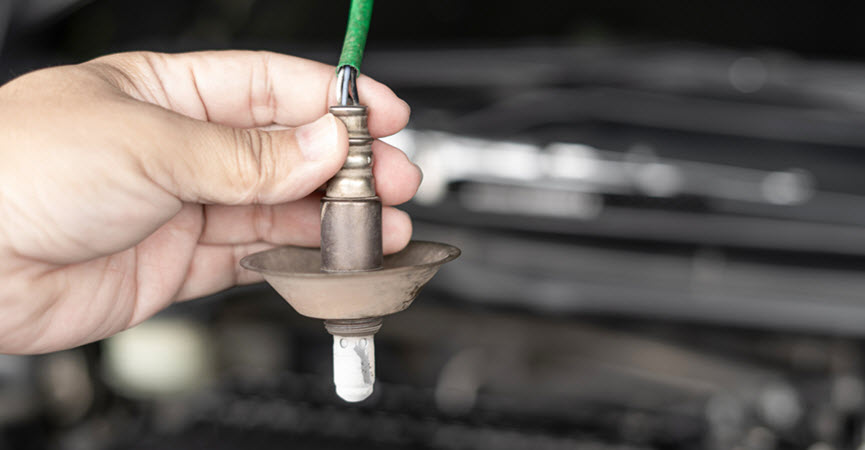
Bring Your Audi to JCL Automotive
If you suspect your Audi’s O2 sensor may be experiencing problems, bring it to the experts at JCL Automotive for a full diagnostic and repair service. Our skilled service technicians are ready and waiting to help. If you live in or around Hellertown, PA, call or stop by today!

by Chris Limantour | Oct 27, 2022 | Audi Repair
S Tronic is Audi’s name for their dual clutch automatic transmission. S Tronic transmissions are designed to offer the best of both worlds: the fuel economy of a manual transmission with the convenience of an automatic.
S Tronic transmissions are available on a variety of Audi models, including the A4, A5, and A6. S Tronic transmissions use two clutches to engage the gears, one for odd-numbered gears and one for even-numbered gears. This allows for quick, precise shifts with no interruption in power delivery.
S Tronic transmissions also feature launch control, which allows the driver to make the most of the engine’s power when accelerating from a stop. For drivers who want the ultimate in performance and convenience, S Tronic is the way to go. Let’s dive into this amazing and fun transmission and what it can do to enhance your drive.
Inside the S Tronic System
The S Tronic transmission is a type of automatic gearbox that’s fitted to many Audi models. It’s made up of several parts, including:
The transmission control unit (TCU)
The transmission control unit, or TCU for short, is one of the most important parts in your car’s engine. It makes sure that you can change gears smoothly and efficiently. This enables faster driving conditions with less risk of accident, because it helps drivers maintain higher speeds without forcing them into sudden stops.
The clutch
The clutch in an S Tronic transmission is responsible for transferring power from the engine to the transmission. When the clutch is disengaged, it allows the engine to spin without turning the transmission. The clutch is controlled by a hydraulic system that is activated when you press the clutch pedal. The clutch pedal is connected to a master cylinder, which contains fluid that is used to pressurize the clutch system. The pressure from the fluid activates a series of pistons that push against the clutch plate, disengaging it from the flywheel. This allows the engine to spin without turning the transmission. When you release the clutch pedal, the pressure is released and the clutch plate is able to re-engage with the flywheel, transferring power to the transmission.
The gearbox
The gearbox in an Audi is a complex piece of machinery that is responsible for transferring power from the engine to the wheels. The gearbox consists of a number of gears that are meshed together, and each gear has a different ratio. When the engine is running, the gearbox is constantly spinning and shifting gears in order to provide the correct amount of power to the wheels. The gearbox is an essential component of any car, and it must be carefully maintained in order to avoid problems.
The differential
The differential helps to distribute power from one wheel to another for greater control in diverse situations like turning corners at high speeds.
Various sensors and Actuators
Transmission sensors, also called speed sensors, are used by the transmission control module to monitor the speed of the transmission gears. The transmission control module uses this information to determine when to shift gears. There are usually two transmission sensors; one for each gear.
In most cars, there is one actuator for each gear. However, Audi is an example of a car that has two actuators per gear. Each transmission sensor and actuator is specific to the transmission it is used in and is not interchangeable with other transmissions.
How to Enjoy the S Tronic Transmission
Audi’s with S Tronic transmissions have an extra shift paddle on the steering wheel, which is used to engage manual mode. To use S Tronic, simply put the car in drive and let the transmission do its work.
For regular driving, there is no need to use the paddle shifters. However, when more power is needed, engaging manual mode will allow the driver to select the desired gear. S Tronic provides quick and seamless shifts, making it a great choice for both performance and everyday driving! Audi’s S Tronic transmission is a great option for those who want the best of both worlds, and the fun that comes with driving a performance sports car.
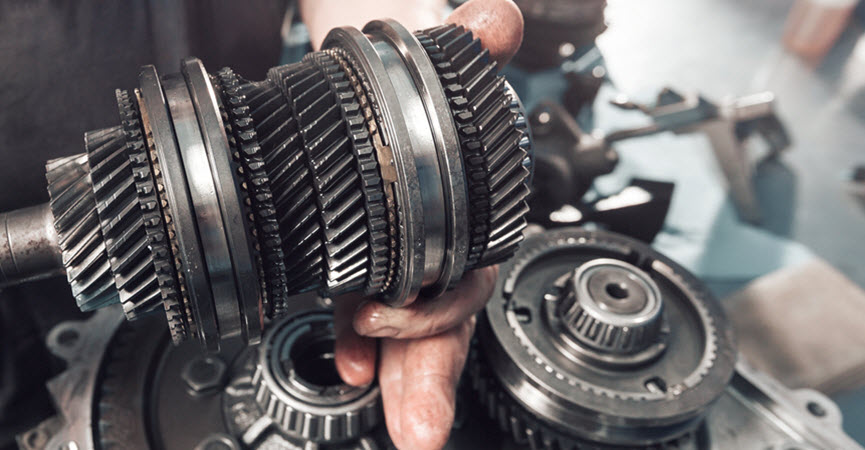
We are Your S Tronic Transmission Experts
JCL is your Audi specialist in the Hellertown area. We are conveniently located to serve our neighbors in surrounding communities, including:
- Allentown
- Bethlehem
- Easton
- Quakertown
Whether it’s annual maintenance or emergency repairs, our friendly staff is here to help so please, call or visit our shop today for an appointment or with any questions you may have about service.
* Audi A7 Car image credit goes to: Dmitrii Guldin.

by Chris Limantour | Oct 10, 2022 | Audi Repair
The Audi brand is continually looking for new and inventive methods to further enhance its designs, which are already loaded with cutting-edge technology. The company has become one of the most well-known automakers in the world because of its mechanical innovation and technical advancement. Still, Audi cars may be prone to exhaust component failure if the car is not maintained properly.
One of the most crucial systems in your car is the exhaust system. Its function is to regulate emissions that might be harmful to the environment. It also guards your engine against dangerous pollutants. Not only that, it prevents harmful exhaust gasses from entering the passenger compartment.
Your exhaust system as a whole must be functioning properly. If not, it will impact the performance of your car and perhaps your health. A faulty exhaust system can potentially cause serious engine damage that is very expensive to fix if it is not addressed.
Causes of Failure in the Exhaust of Your Audi
The exhaust system of your Audi may fail if there is a problem like a leak, a fault, or rust in any of the components of the exhaust. This includes the exhaust pipes, oxygen sensor, catalytic converter, muffler manifold gaskets, diesel particulate filter, silencer, or any other component in the system.
Tell-tale Signs of Exhaust Problems in Your Audi
- Excessive Engine Noise: An unusually-noisy engine is one of the obvious indications of exhaust issues in your Audi. A damaged exhaust manifold gasket will cause an exhaust leak that produces a tapping or hissing The noise will be very loud when you speed up the car or give it a start.
- Decrease in Speed and Power: Your engine’s performance will start to suffer if your exhaust system malfunctions. You will notice difficulty accelerating as quickly as you used to, and you won’t gain the same power when you do. If you don’t fix this issue, it will only get worse.
- Decrease in Efficiency of Fuel: If your vehicle’s acceleration and power drop so would its fuel economy. To perform normally, your Audi would work harder, using up more gasoline. You may think that replacing or repairing your exhaust would cost you a lot, but if you don’t have it fixed, you’ll start paying a lot more for petrol.
- Burning smell from the engine: The high temperature from the exhaust fumes may cause any plastic components under the hood to burn if your gasket breaks and starts to leak close to the engine wiring or any other components made of plastic. The burning components would emit an odor similar to that of a burning engine. It may also emit a little amount of smoke. However, you shouldn’t wait until you see smoke before having it examined. To prevent any possibility of harm to yourself or your passengers, get your car examined as soon as you notice any burning smells or smoke.
- Loose Exhaust Pipe: Repairing the exhaust pipe of your Audi is important if it is dangling on the ground. The pipe might start to dangle underneath the car if any portion of it becomes damaged, even if it doesn’t leak. Not only does the dragging endanger you, but it also endangers the drivers around you if it comes loose from the car.
- Fuel smell from inside the car: While you’re driving, if you perceive fuel inside your car, there may be an exhaust issue. Usually, it results from a damaged exhaust pipe or tube that starts to leak. When it occurs, gasoline fumes escape via every opening they may find. Your car’s cabin may serve as such a location occasionally.
These are only a few signs that your car’s exhaust system needs repair. You need to take your car to a professional technician if the following symptoms are noticed in your car.
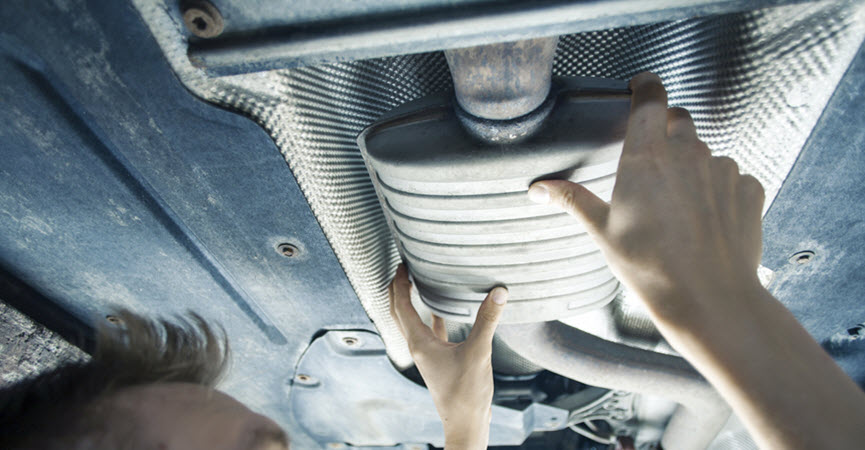
Bring your Car to JCL Automotive for Repair
If you need help with your Audi exhaust system, visit us at JCL Automotive for repair. Our professional technicians are certified and trained in the repair and maintenance of Audi vehicles. We are equipped with high-quality equipment and tools to provide the best service.
Our shop is in Hellertown, PA, and we provide services to car owners in the surrounding communities! Call or visit our shop to set up your next service appointment. We look forward to earning your trust for future Audi service appointments.

by Chris Limantour | May 17, 2022 | Audi Repair
Audis are packed with cutting-edge technology, and their engineers are constantly searching for innovative ways to further improve their designs. The brand’s innovative performance and ongoing technological progress have made it one of the world’s most popular automobile brands. Despite their impressive designs, Audi engines like most engines are susceptible to misfiring problems.
Engine misfire occurs when one or more of your engine cylinders doesn’t produce power, causing reduced engine performance. The cause of an engine misfiring could be attributed to several factors and usually show some symptoms. The misfire could be a persistent or an occasional one. Since there are various probable explanations for the problem, the best thing to do if you discover your engine is misfiring is to take it to an Audi specialist for assistance in determining the core causes and consequently repair it.
Causes of Audi Engine Misfire
There are several reasons why your Audi may be misfiring. They include:
- Ignition System Failure: The ignition and combustion processes are controlled by the ignition system, which assists the engine in starting. The system comprises various components that work together to turn on your engine. When there is an issue with the system, it typically results in an unequal fuel/air ratio, which your engine needs to fire properly. When the ignition system causes an engine to misfire, it could have resulted from a defective ignition coil, failed spark plug, failed ignition cable, or faulty distributor caps.
- Faulty Spark Plug: The spark plugs are responsible for igniting the fuel-air mixture. Hence their performance is crucial to the engine’s performance. As a result of wear and tear, the spark plug may become defective over time. When your spark plugs are worn out, they can cause your engine to run rough and should be changed. It can also be damaged if you don’t follow your manufacturer’s maintenance recommendation.
- Faulty Ignition Wires: The ignition system wires deliver spark to the spark plug, allowing combustion to take place. The wiring in the ignition system may wear out over time, leading the ignition system to fail. When your ignition system wiring is not in good shape, it won’t work properly, causing the engine to misfire. The spark plug wiring follows the same rule. If the spark plug wiring is not in good shape, the engine will misfire, resulting in reduced efficiency.
- Fuel Injection System: The fuel injectors job is to spray atomized fuel into an internal combustion engine’s combustion chamber. Your engine may misfire if the fuel injector isn’t working properly. The free flow of gasoline to the engine for combustion is restricted when the fuel injector is clogged by debris, rust, and dirt. A disproportionate mixture of air and gasoline during the combustion process can cause your engine to misfire.
- Improper Fuel/Air Mixture: Your engine combustion process requires the perfect gasoline and air mixture. When the ratio of mixture is off, or there’s not enough fuel or air, engine misfiring is common. It’s vital to keep the fuel system in top shape all year by ensuring the gasoline pumps, fuel filters, fuel injectors, and oxygen sensors are all in good operating order.
How to Detect Engine Misfire
The good thing about an engine misfiring is that it has easy telltale signs indicating the problem. Some things to look for to quickly figure out that your engine is misfiring include:
- Reduced engine performance: When your engine starts to misfire, your vehicle performance reduces. You may notice delayed acceleration, rough idle, or power loss.
- Illuminated check engine light: Engine misfire is usually a result of one or more of the engine cylinders not producing power, which causes reduced engine performance. The engine notifies the driver of the change by activating the ‘check engine warning.
- Increased fuel consumption: If the misfire results from the fuel/air ratio running rich, you would notice reduced fuel economy.
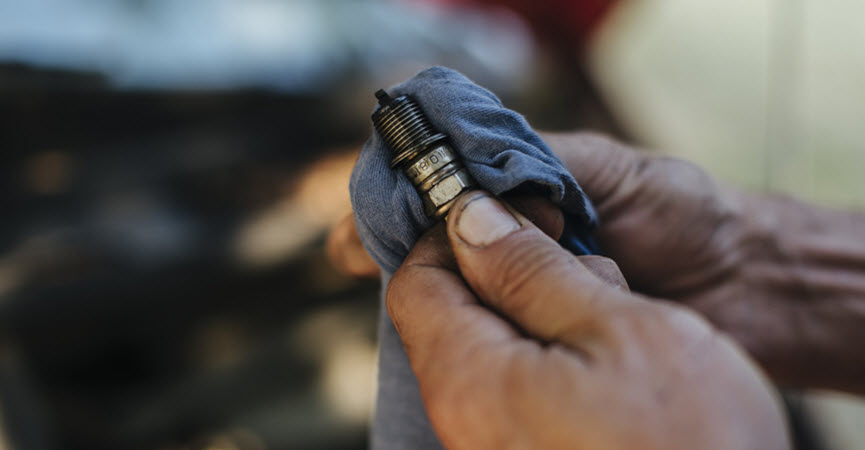
We Will Fix Your Engine Misfires!
Regardless of the size of the job, JCL Automotive has the experience and equipment to provide accurate and high-quality services. Our professional mechanics are familiar with the engineering designs of Audi vehicles. You can rely on us to properly care for your Audi and maintain its performance, both in terms of maintenance and repair.
We are based in Hellertown, PA, and also welcome drivers from surrounding communities! Please call or visit our shop to fix your next service appointment. We look forward to earning your repeat business.
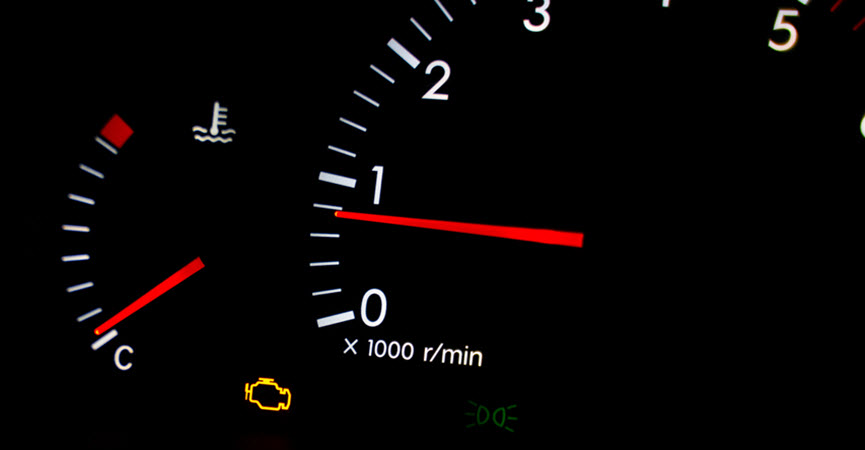
by Chris Limantour | May 1, 2022 | Audi Repair
Often, Audi vehicles have a camshaft tensioner that uses pressurized hydraulic oil to keep the timing belt running. The camshaft tensioner ensures that the belts maintain proper tension and remain tight during operation. The tensioner operates by receiving oil from the engine, allowing this mechanism to maintain tension and keep the belts running at peak performance.
As long as the tensioner does its job, the timing chain securely stays in place. However, this oil can seep or leak out of the tensioner, leading to serious problems. This is known as a camshaft tensioner leak. A camshaft tensioner leak typically indicates incorrect pressure levels in the breather and can lead to catastrophic engine damage, malfunctions, and complete breakdown of your Audi.
Causes Of Camshaft Tensioner Leak
The various common causes of a camshaft tensioner leak include:
- Natural wear and tear: The camshaft may begin to leak after prolonged usage. Having poor lubrication and continuous use can damage the rollers disrupting the timing of the camshaft and crankshaft.
- Overstretching: The tensioner can become overstretched, which will lead to improper movement of the belt. Overstretching could cause the engine to run rough; in turn, the piston can strike and damage the valves.
- Irregular oil change: It is essential to maintain regular maintenance, including changing the oil. Old oil can have a lot of debris build-up. These unwanted particles can stick between the rollers causing damage and disrupting the movement of the camshaft and crankshaft.
Symptoms Of a Camshaft Tensioner Leak
There are various ways to tell if your camshaft tensioner is damaged and leaking. The following includes the common warning signs:
- Unusual sounds: A tensioner leak can lead to a loose timing belt which can cause grinding, clicking, and ticking noises.
- Slow acceleration: A tensioner leak can cause the belt to slip due to improper tension, thereby affecting the engine response time.
- Heavy Exhaust Fumes: Smoke or abnormal-colored fumes coming from your exhaust can indicate that your timing belt is worn and needs to be replaced.
- Check Engine Light is on: Though the check engine light may come on for various reasons, there are many components connected to the engine for its proper function. A camshaft tensioner leak may also be a reason for it to come on as it could cause the engine to malfunction.
- Early/Premature Belt Wear: The camshaft tensioner is responsible for various things, including the timing belt that can wear out due to old and prolonged usage. However, the leak from the tensioner can cause the acceleration of belt damage and wear if the wear occurs earlier than usual.
- No start: Since it is the camshaft tensioner that keeps the proper tension on the timing belts and other components to keep your Audi engine running, a camshaft tensioner leak could lead to a loosened, snapped, or stretched timing belt. This directly affects its ability to manage the engine’s valves and pistons, resulting in timing issues that cause the engine to misfire. Pieces from the loosened or snapped timing belt can get lodged into other engine areas, thereby causing severe damage.
- Belt-driven components malfunction: Various accessories of your vehicle are linked to the engine by a belt system. If there is a break in this belt system, the associated accessories like the A/C system, alternator, and radiator will all malfunction.
The camshaft tensioner is a crucial component of the working mechanisms which keep your vehicle performing optimally. If you suspect that your Audi already has a camshaft tensioner leak, the only way to safely proceed is to take your vehicle to a certified Audi technician.

JCL Automotive for Quality Auto Maintenance and Repairs
At JCL Automotive, we have been a reputable European auto service center since 2005. We pride ourselves on performing high-quality maintenance and repair for all our clients. Our professionals are certified Audi experts with rich knowledge and years of experience, including fixing camshaft tensioner leaks in your Audi.
We are located in Hellertown, PA, and we also service the surrounding area of Allentown, Bethlehem, Easton, and Quakertown. Please call or visit our shop today to book your next service appointment.






























